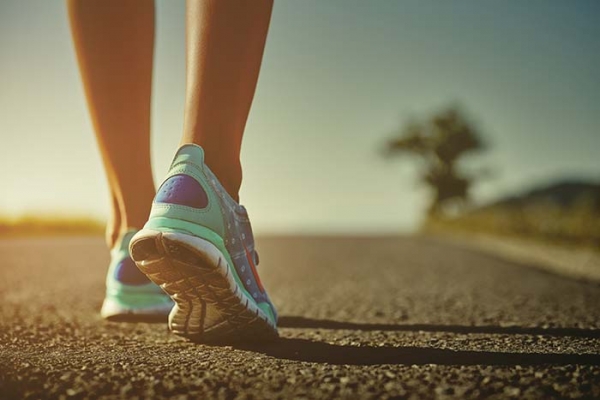Caring for Your Feet When Training
You’ve decided to start running again. Maybe it’s to lose a few extra pounds or maybe you’re training for a marathon. Either way, it is important to maintain proper foot care to ensure that your feet can carry you the distance.
Here are some quick tips on properly caring for your feet while in training.
Understanding Your Feet
Before you are able to care for your feet, it is important to understand the foot itself. The foot and ankle are complex in structure and mechanics, serving as the foundations for your body with shock absorbing properties.
The foot and ankle contain 26 bones (25% of the body’s bones), 33 joints, more than 100 muscles, tendons, and ligaments. The foot can be divided, anatomically, into three parts: forefoot, midfoot, and hindfoot.
- Forefoot—consists of five toes and their connecting bones. The toes are connected to the metatarsals by five joints at the ball of the foot. The forefoot balances pressure on the ball of the foot, bearing roughly half of the body’s weight.
- Midfoot—forms the foot’s arch, serving as a shock absorber. The bones in the midfoot connect to the forefoot and hindfoot by muscles and the arch ligament.
- Hindfoot—is made up of three joints which link the midfoot to the ankle. The heel bone is the largest bone in the foot, and underneath that bone is a cushioning layer of fat.
Tips on Proper Foot Care
- Invest in proper running shoes—it is important to have your feet properly measured or fitted for shoes that meet your needs. Some people require less support, while others need more cushioning. If you require a shoe that is out of the ordinary, you should try shopping at a specialty running store.
- Wear the right shoes when you aren’t running—the shoes you wear when you aren’t running matter just as much as your running shoes. High heels are the worst type of shoe that a female runner can wear because they push your center of mass forward, throwing off your hip and spine alignments. Modifying your heel-wearing time will reduce aches and may even improve your running form by reducing calf and foot tightness.
- Invest in high quality socks—ill-fitting and non-wicking socks are one of the top causes of blisters. A poor fitting sock will allow your shoes to rub against your heels, which can cause a lot of pain while you run. Non-wicking socks don’t let your feet breathe, creating a wet environment when you sweat, which could lead to athlete’s foot and foot fungus.
- Get stronger—performing barefoot exercises will ensure that every muscle and ligament in your lower body is in working order. You should try to add strength work into your training two or three times a week. The key is to include exercises that improve mobility and balance. Yoga and Pilates are a great way to strengthen and stretch the feet.
- Fix your form—increasing your cadence will help improve your running form. A slow cadence likely means that you’re covering too much ground with each step, increasing the impact forces on your body. Do a quick inventory of how often your foot hits the ground by counting the number of steps taken by one foot for one minute. If you have less than 88 strides, then your cadence is too slow.
- Soften your skin—most runners tend to have dry feet, which can lead to painful cracking. Moisturize your skin every day, rubbing the lotion in until your feet feel soft and smooth.
- Cool down your toes—if your feet swell or get overheated when you run, you should consider applying ice or soaking your feet in cold water right after your run. Elevating your foot above your chest will also help reduce swelling.
- Massage—while massaging your own feet might not be quite the same as having someone else do it for you, it can still be quite effective. You should start by rubbing your feet for several minutes before dusting them with foot powder. Then continue to rub your feet until they feel smooth.
Schedule an Appointment
If you feel any discomfort after running or even after a long day spent on your feet, then you should schedule an appointment with Dr. Vikki and Dr. Connie. With years of collective experience between them, they will get to the bottom of what’s causing your foot pain and map out the best solution for you.

